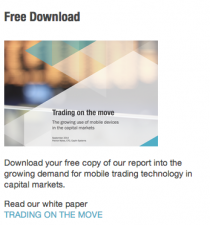A timely publication by Gil Mandelzis, CEO of EBS on Best Practice in Aggregation highlights some key points:
An aggregation provider aims to consolidate the liquidity streams from multiple venues to provide best price and execution to its customers, who then no longer need to deal through multiple screens or connections. Aggregation providers in essence create a private marketplace unique to each customer, with the promise of optimising and personalising execution quality and effectiveness.
EBS believes that aggregation providers bring real value to the market. While there are many customers who choose to build and support their own aggregation solutions, these third party providers present a compelling value proposition to those who choose to outsource this service.
- They integrate any liquidity the customer needs.
- They provide traders with a variety of tools and workflows based on both the institution’s and the trader’s own individual preferences and policies.
- They provide algorithms (and accommodate the customer’s own algorithms) to help the customer achieve best price or best execution.
EBS believes it is essential that aggregation providers adhere to the following best practices:
- Aggregation providers should operate as agents, not as principals to the trade.
- All sources of revenue generated by an aggregation provider with respect to a customer’s trading must be fully disclosed to the customer.
- The prices a customer sees as ‘best prices’ should, without exception, represent the best prices available to the customer.
- The sources of liquidity and credit provided and any potential conflict of interest should be fully disclosed to the customer.
Banks, such as Barclays now offer FX Aggregation solutions to clients as part of BARX FX, the service is called BARX FX/Gator.
Profit&Loss comments on the white paper and best practice here (registration required)
Filed under: CEP, FX, Paul Blank |



Leave a comment